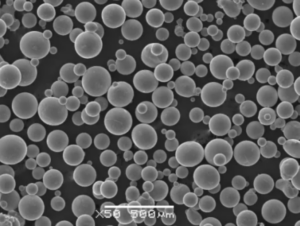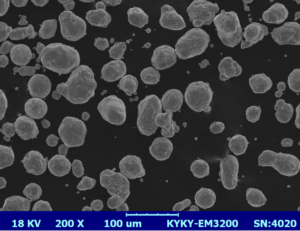Chorro de metal líquido (LMJ) está revolucionando el mundo de la fabricación. Si no ha oído hablar de ella, no se preocupe, no es el único. Es como una joya oculta en el mundo de las tecnologías de impresión 3D. Este artículo se adentrará en los entresijos de la LMJ, explorando sus complejidades, aplicaciones y los polvos metálicos que la hacen posible. Lo haremos divertido, atractivo y, lo más importante, fácil de entender.
Descripción general de Liquid Metal Jetting (LMJ)
Imagine poder imprimir piezas metálicas con la misma facilidad y precisión con la que las impresoras de inyección de tinta producen documentos. Esa es la promesa de la tecnología Liquid Metal Jetting. La tecnología LMJ consiste en depositar con precisión gotas de metal fundido sobre un sustrato para crear complejas estructuras tridimensionales capa a capa. Este método está ganando adeptos por su potencial de alta resolución y eficiencia material.
Detalles clave
| Aspecto | Descripción |
|---|---|
| Tecnología | Fabricación aditiva |
| Material | Polvos de metal fundido |
| Proceso | Deposición de gotas |
| Aplicaciones | Aeroespacial, médica, automoción, electrónica |
| Ventajas | Alta precisión, eficiencia de materiales, geometrías complejas |
| Limitaciones | Coste del equipo, limitaciones de material, conocimientos técnicos necesarios |
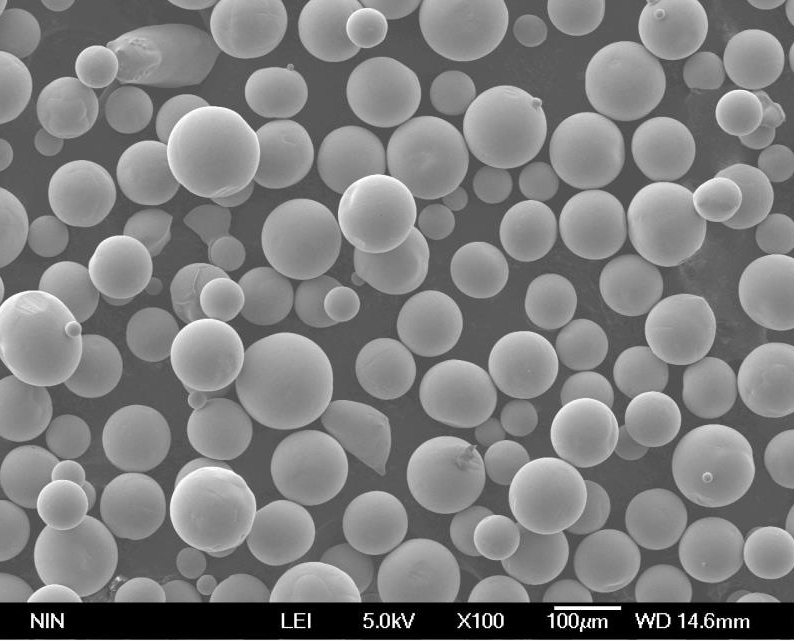
Tipos y características de Chorro de metal líquido (LMJ) Polvos metálicos
Para sacar el máximo partido de la LMJ, la elección del polvo metálico es crucial. Analicemos algunos polvos metálicos concretos y conozcamos sus características únicas.
Polvos metálicos comunes utilizados en LMJ
| Polvo metálico | Composición | Propiedades | Caracteristicas |
|---|---|---|---|
| Titanio (Ti) | Titanio puro | Alta resistencia, resistencia a la corrosión | Ligero, biocompatible |
| Acero inoxidable | Hierro, cromo, níquel | Duradero, resistente a la corrosión | Alta resistencia, resistente al calor |
| Aluminio (Al) | Aluminio puro | Ligero, buena conductividad térmica | Alta maquinabilidad, no magnético |
| Aleación de niquel | Níquel, cromo, hierro | Resistencia a altas temperaturas | Alta resistencia, resistente a la corrosión |
| Cobre (Cu) | Cobre puro | Excelente conductividad eléctrica | Dúctil, alta conductividad térmica |
| Cromo-cobalto | Cobalto, cromo | Resistente al desgaste, alta resistencia | Biocompatible, alta dureza |
| Oro (Au) | Oro puro | Alta conductividad eléctrica, dúctil | Resistente a la corrosión, biocompatible |
| Plata (Ag) | Plata pura | Mejor conductividad eléctrica | Dúctil, propiedades antibacterianas |
| Inconel | Aleación de níquel-cromo | Resistencia a la oxidación, alta resistencia | Resistencia a altas temperaturas |
| Tungsteno (W) | Tungsteno puro | Punto de fusión más alto | Alta densidad, propiedades de blindaje contra las radiaciones |
Aplicaciones de los polvos metálicos LMJ
| Polvo metálico | Aplicaciones |
|---|---|
| Titanio (Ti) | Piezas aeroespaciales, implantes médicos |
| Acero inoxidable | Componentes de automoción, Utillaje |
| Aluminio (Al) | Componentes estructurales ligeros |
| Aleación de niquel | Turbinas de gas, Procesamiento químico |
| Cobre (Cu) | Conectores eléctricos, Intercambiadores de calor |
| Cromo-cobalto | Implantes dentales, implantes ortopédicos |
| Oro (Au) | Electrónica, Productos sanitarios |
| Plata (Ag) | Revestimientos antibacterianos, Electrónica |
| Inconel | Aeroespacial, Generación de energía |
| Tungsteno (W) | Aeroespacial, Defensa |
Características y propiedades
- Titanio (Ti): Conocido por su elevada relación resistencia-peso y su excelente resistencia a la corrosión, resulta ideal para aplicaciones aeroespaciales y médicas.
- Acero inoxidable: Metal versátil de gran resistencia a la corrosión, muy utilizado en automoción y aplicaciones industriales.
- Aluminio (Al): Ligero y conductor térmico, el aluminio es perfecto para aplicaciones que requieren ahorro de peso y disipación del calor.
- Aleación de níquel: Estas aleaciones ofrecen una excelente resistencia a altas temperaturas y a la oxidación, lo que las hace adecuadas para entornos difíciles.
- Cobre (Cu): Con una conductividad eléctrica y térmica superior, el cobre es esencial para las aplicaciones eléctricas.
- Cromo-cobalto: Esta aleación es extremadamente resistente al desgaste y fuerte, adecuada para implantes médicos por su biocompatibilidad.
- Oro (Au): Altamente conductor y biocompatible, el oro se utiliza en electrónica y dispositivos médicos.
- Plata (Ag): Al ser el mejor conductor de la electricidad y poseer propiedades antibacterianas, la plata se utiliza en aplicaciones electrónicas y médicas especializadas.
- Inconel: Conocido por su gran resistencia y su resistencia a la oxidación a altas temperaturas, se utiliza en la industria aeroespacial y en la generación de energía.
- Tungsteno (W): Con el punto de fusión más alto de todos los metales, el wolframio se utiliza en aplicaciones que requieren alta densidad y resistencia a la temperatura.
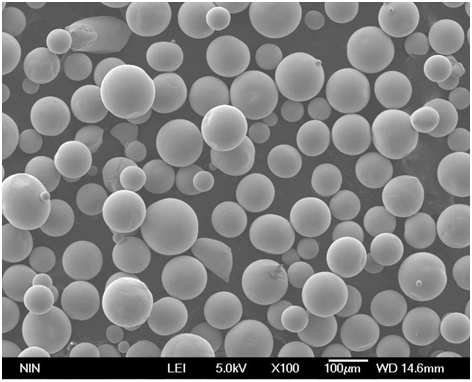
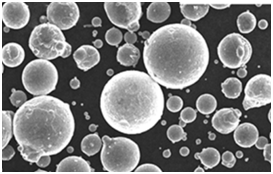

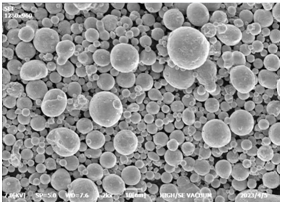
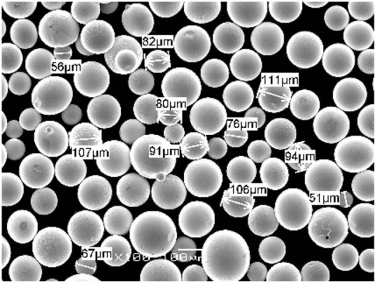
Especificaciones, tamaños, calidades, normas
| Polvo metálico | Especificaciones | Tallas | Los grados | Normas |
|---|---|---|---|---|
| Titanio (Ti) | ASTM B348, AMS 4928 | -325 Malla | Grados 1-5 | ASTM, ISO, AMS |
| Acero inoxidable | ASTM A276, AISI 316L | -325 Malla | 316L, 304, 17-4PH | ASTM, ISO, AISI |
| Aluminio (Al) | ASTM B209, AMS 4037 | -325 Malla | 6061, 7075 | ASTM, ISO, AMS |
| Aleación de niquel | ASTM B637, AMS 5662 | -325 Malla | Inconel 718, 625 | ASTM, ISO, AMS |
| Cobre (Cu) | ASTM B216, ASTM B152 | -325 Malla | C11000, C10100 | ASTM, ISO, UNS |
| Cromo-cobalto | ASTM F1537, ISO 5832-12 | -325 Malla | CoCrMo | ASTM, ISO |
| Oro (Au) | ASTM B562 | -325 Malla | 99.99% Puro | ASTM |
| Plata (Ag) | ASTM B700 | -325 Malla | 99.99% Puro | ASTM |
| Inconel | ASTM B637, AMS 5662 | -325 Malla | 718, 625 | ASTM, ISO, AMS |
| Tungsteno (W) | ASTM B777 | -325 Malla | 99.95% Puro | ASTM, ISO |
Aplicaciones de Chorro de metal líquido (LMJ)
La LMJ tiene una amplia gama de aplicaciones en diversos sectores, gracias a su capacidad para producir geometrías complejas con gran precisión.
Aplicaciones y usos de LMJ
| Industria | Solicitud |
|---|---|
| Aeroespacial | Componentes del motor, Piezas estructurales |
| Médico | Implantes, Prótesis, Instrumental quirúrgico |
| Automotor | Piezas de motor, Componentes personalizados |
| Electrónica | Disipadores térmicos, Componentes de circuitos |
| Herramientas | Moldes, troqueles, herramientas de corte |
| Joyería | Diseños personalizados, Prototipos |
| Defensa | Piezas de armas, Equipos de protección |
| Energía | Álabes de turbina, Intercambiadores de calor |
Ventajas de LMJ
¿Por qué LMJ está causando sensación en la industria manufacturera? He aquí algunas de sus principales ventajas:
- Alta precisión: LMJ puede producir geometrías complejas y precisas, difíciles de conseguir con los métodos de fabricación tradicionales.
- Eficiencia del material: Al utilizar sólo la cantidad necesaria de material, LMJ minimiza los residuos, lo que la convierte en una opción rentable y respetuosa con el medio ambiente.
- Geometrías complejas: La construcción capa a capa permite crear estructuras complejas que no son posibles con las técnicas convencionales.
- Versatilidad: La LMJ puede utilizarse con una gran variedad de metales, lo que la hace idónea para múltiples aplicaciones en distintos sectores.
Limitaciones de LMJ
A pesar de sus muchas ventajas, la LMJ tiene algunas limitaciones:
- Coste del equipo: La inversión inicial en equipos LMJ puede ser elevada, lo que puede suponer un obstáculo para las pequeñas empresas.
- Restricciones materiales: No todos los metales son adecuados para la LMJ, y algunos pueden requerir condiciones de procesamiento específicas.
- Experiencia técnica: El manejo y mantenimiento de los equipos LMJ requiere conocimientos y habilidades especializados.
Tabla: Ventajas e inconvenientes de la LMJ
| Aspecto | Pros | Contras |
|---|---|---|
| Precisión | Alta | – |
| Eficiencia material | Pocos residuos | – |
| Complejidad | Puede crear geometrías complejas | – |
| Coste | – | Inversión inicial elevada |
| Versatilidad de materiales | Trabaja con varios metales | Algunos metales no son adecuados |
| Conocimientos técnicos | – | Requiere conocimientos especializados |
Proveedores y precios de LMJ Metal Powders
Encontrar el proveedor adecuado es crucial para las operaciones de LMJ. He aquí una lista de algunos proveedores destacados y sus precios.
Tabla: Proveedores y precios del polvo metálico LMJ
| Proveedor | Polvo metálico | Precio (por kg) | Póngase en contacto con |
|---|---|---|---|
| Höganäs AB | Acero inoxidable | $80 | www.hoganas.com |
| Tecnología Carpenter | Titanio, aleación de níquel | 150 $ (Ti), 200 $ (Ni) | www.cartech.com |
| Tecnología LPW | Aluminio, Inconel | 100 $ (Al), 250 $ (In) | www.lpwtechnology.com |
| Aditivos GKN | Cobre, cromo-cobalto | 90 $ (Cu), 300 $ (CoCr) | www.gkn.com/en/our-divisions/gkn-additive |
| Arcam AB | Titanio, acero inoxidable | 160 $ (Ti), 85 $ (SS) | www.arcam.com |
| Tekna | Tungsteno, aluminio | 400 $ (W), 110 $ (Al) | www.tekna.com |
| HC Starck | Oro, Plata | 50.000 $ (Au), 1.200 $ (Ag) | www.hcstarck.com |
Comparación de polvos metálicos para LMJ
La elección del polvo metálico adecuado depende de los requisitos específicos de la aplicación. He aquí una comparativa de los distintos polvos metálicos utilizados en LMJ.
Tabla: Comparación de polvos metálicos
| Propiedad | Titanio (Ti) | Acero inoxidable | Aluminio (Al) | Aleación de niquel | Cobre (Cu) | Cromo-cobalto | Oro (Au) | Plata (Ag) | Inconel | Tungsteno (W) |
|---|---|---|---|---|---|---|---|---|---|---|
| Fuerza | Alta | Alta | Medio | Muy alta | Medio | Muy alta | Medio | Bajo | Muy alta | Muy alta |
| Densidad | Bajo | Medio | Bajo | Alta | Medio | Alta | Alta | Medio | Alta | Muy alta |
| Conductividad | Medio | Bajo | Alta | Bajo | Muy alta | Bajo | Muy alta | Muy alta | Bajo | Bajo |
| Resistencia a la corrosión | Alta | Alta | Medio | Alta | Medio | Alta | Muy alta | Alta | Alta | Alta |
| Coste | Alta | Bajo | Bajo | Alta | Medio | Alta | Muy alta | Alta | Alta | Medio |

Preguntas más frecuentes
| Pregunta | Respuesta |
|---|---|
| ¿Qué es el chorro de metal líquido (LMJ)? | LMJ es un proceso de fabricación aditiva que deposita gotas de metal fundido para construir estructuras 3D capa a capa. |
| ¿Qué metales pueden utilizarse en LMJ? | Pueden utilizarse metales como titanio, acero inoxidable, aluminio, aleaciones de níquel, cobre, cromo-cobalto, oro, plata, Inconel y tungsteno. |
| ¿Cuáles son las ventajas de LMJ? | Alta precisión, eficiencia del material, capacidad para crear geometrías complejas y versatilidad en el uso de distintos metales. |
| ¿Cuáles son las limitaciones de LMJ? | El elevado coste de los equipos, las limitaciones de material y la necesidad de conocimientos técnicos especializados. |
| ¿Cómo se compara LMJ con otras tecnologías de impresión 3D? | La LMJ ofrece una mayor precisión y eficiencia del material, pero requiere una mayor inversión inicial y más conocimientos técnicos en comparación con otros métodos. |
| ¿Dónde se utiliza habitualmente la LMJ? | LMJ se utiliza en industrias como la aeroespacial, médica, de automoción, electrónica, de herramientas, joyería, defensa y energía. |
| ¿Qué factores deben tenerse en cuenta al elegir un polvo metálico para LMJ? | Entre los factores a tener en cuenta están la resistencia, la densidad, la conductividad, la resistencia a la corrosión y el coste del polvo metálico. |
| ¿Quiénes son algunos de los principales proveedores de polvos metálicos LMJ? | Entre los proveedores más destacados figuran Höganäs AB, Carpenter Technology, LPW Technology, GKN Additive, Arcam AB, Tekna y HC Starck. |
| ¿Cuál es el coste de los polvos metálicos LMJ? | Los costes varían mucho según el metal, con precios que oscilan entre los 80 dólares por kg de acero inoxidable y los 50.000 dólares por kg de oro. |
| ¿Se puede utilizar LMJ para la producción en serie? | Aunque la LMJ es adecuada para producir piezas de alta precisión, suele ser más apropiada para la producción de lotes pequeños y la creación de prototipos debido a su elevado coste de equipamiento. |
